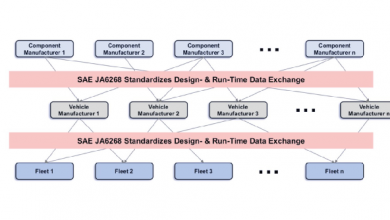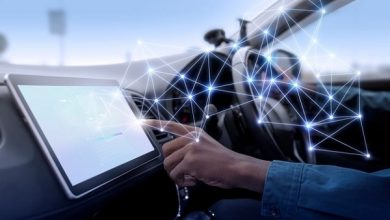The new world of connected vehicles and network economy

We live in a world where technology is moving faster than anyone expected and we still have a lot to catch up on. Thanks to Internet of Things (IoT)! Our devices are now moving towards creating a more connected environment and to showcase not just an easier and safer way of living but also an efficient one. As the IoT continues to expand in areas like retail and healthcare, fleet management comes as the latest addition to the list of ways to connect vehicles and drivers in a new way.
According to a recent report by Gartner, it estimated that by 2020, more than 250 million vehicles will be connected globally and added that the number of installed connectivity units in vehicles worldwide will increase by 67 percent. The report also said that the consumer spending on in-vehicle connectivity will double over the current rate1.
As we step into a sharing economy, vehicles like cars, scooters or even buses are interchangeably shifting the ownership, unless the fleet is used for heavy industries involving carriers like trucks, railways or airways. This trend increasingly is witnessing a surge in their usage and the deployment of technology that could make them more efficient. For companies operating the fleets for these vehicles, incorporating a digital structure into these automobiles are expected to have a major impact on their sales and the quality of the product. By integrating Vehicle tracking / Fleet management devices & wireless connectivity into fleet vehicles, drivers and owners are now aware of the real-time sharing of vehicle diagnostics, GPS-based tracking, routing information, and more. Owners can now also make quick, knowledgeable decisions while considering every possible step of the fleet management process. From traffic to time delays, the process of digitization of these vehicles will help every individual using these vehicles to make informed solutions from getting their vehicles on the road and reaching their destinations on time.
The use of technology and digitization for the automotive industry has been imbibed from the way the product is made now to the way it is sold. It is a known fact that the automotive industry has been the biggest spender on engineering research and development. And with increasing digitization across sectors, automobile makers have started looking at new ways to capitalize on it, while reducing costs of production. From steering fashionable and efficient new technologies, companies have implemented IoT on shop floor so that the vehicles can be produced with high-quality and are tailor-made to address customer demands.
With automakers and vehicle owners already present in the changing digital ecosystem, the connected car is already a reality while technology like in-vehicle wireless connectivity is rapidly trickling down from being present in just luxury models and premium brands, to high-volume midmarket models. The connected car has passed through different stages of evolution over the last few decades to showcase the advances in both technology and the ecosystem in which that technology functions.
Although vehicle tracking has been present for quite some time, there have been challenges in terms of having an integrated story of devices, connectivity or application. However, there are advancements being made in the telecom sector to increase connectivity while vehicle manufacturers have brought the IoT technology to shop floor to ensure that there are no failures of components that use these technologies.
There is an extended connectivity with devices and people, as consumers eschew the car ownership altogether. A simple example can be seen in Ola and Uber, who have revolutionized the markets by connecting the cars and their owners directly to the customer through internet. They come as shining examples of how efficiently technology could be used to manage a massive fleet effectively. Not just cars, but effective fleet management is being seen even with vehicles like buses. A significant deployment of a fleet management done by Tata Docomo in schools is a demonstration of how technology can improve the citizen-based services. Schools have started using GPS tracking for school buses. The process not just helps the schools to track the buses in real-time but makes the parents’ lives easier by allowing push notifications for estimated time of pick-up and drop.
There is also an integrated voice solution with tracking devices that is designed to make communication with bus drivers & support staff easier and reduce the dependency on their mobile connectivity. Sensors are also being used to control the temperature and humidity while automated attendance with RFID & NFC based cards are expected to help schools integrate attendance starting from pickup point2.
However, given the rate of technology development, vehicle manufacturers will have to work parallelly to prevent their versions of vehicles becoming obsolete. The automotive industry already has a long history of leveraging cutting-edge, cross-industry technologies in design and production, from digital technology to augmented reality to 3D printing. Today, the companies are looking ahead to the next phase and beyond – bringing autonomous or self-driving cars with smart infrastructure and wearable integration into the market.
The requirements of these self-driving cars vary from having a powerful GPS to high-powered cameras along with multiple connected technologies. Players like Google have already showcased their Self-Driving Car Project, while Tesla is also not far behind. These vehicles’ functioning is based on their ability to respond instantly to stimuli and make decisions that drive the right response, based on timeliness, accuracy, frequency of communication, and processing of the information. With little direct human control over the vehicle, the security of the data communicated will be a critical value driver in these technologically-enhanced vehicles. As connectivity expands, the vehicles are expected to be integrated into a broader ecosystem of other devices and infrastructure, while work continues to establish other capabilities like smart traffic routing of self-driving vehicles to improve roadway efficiency.
Amid the revolutionizing industry, automakers are expected to face many challenges like managing complexity and quality, improving flexibility and process optimization, conserving resources, and ensuring profitable growth. And charged with better connectivity and mobility, companies making these vehicles are expected to gain on their overall competitiveness by changing their business models. IoT enables transformational change and there is no denying that the automotive sector is changing rapidly with it. IoT-related technologies will draw the map for the industry to follow, and the connected car will play a major role on the roads and in the future economy.
Reference:



